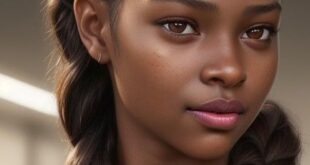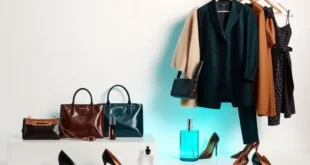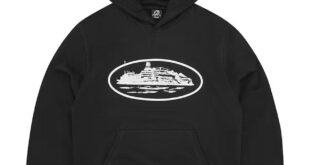Related Articles
Fashion is not merely fur lined leather jacket about clothing; it is an art form, a cultural language, and an expression of individuality. From the latest runway shows in Paris and Milan to the streets of New York and Tokyo, fashion transcends borders, cultures, and periods. It constantly evolves, reflecting the societal shifts, technological advances, and ever-changing aesthetics of the world. Let’s dive into some key facets of the modern fashion landscape: trends, sustainability, and self-expression.
The Role of Trends in Fashion
Fashion trends are one of the most visible elements of the industry. Every year, designers release collections that set the tone for the season, showcasing new colors, cuts, fabrics, and themes. These trends are influenced by a variety of factors, from historical references and politics to global events and pop culture.
For example, the influence of digital culture has significantly impacted fashion, with social media platforms like Instagram and TikTok becoming key players in how trends are set and spread. Influencers, celebrities, and even everyday users often play a role in introducing the next big thing, from oversized silhouettes to bold prints and futuristic accessories. Furthermore, technology itself has found its way into fashion, with innovations such as 3D-printed garments and clothing embedded with smart technology.
While trends help define each era’s aesthetic, they are also cyclical. Many trends from past decades resurface, whether it’s the return of ’90s grunge or the revival of ’70s disco glam. This cyclical nature proves that fashion is a way to not only look forward but also to reflect on the past.
Sustainability and Ethical Fashion
In recent years, sustainability has become one of the most pressing topics within the fashion industry. The rise of “fast fashion” – the rapid production of cheap, mass-market clothing – has had a significant environmental and social impact, leading to concerns about overproduction, waste, and exploitation of labor.
As a result, there has been a growing movement toward sustainable fashion, where brands are taking steps to minimize their environmental footprint. This includes using organic materials, reducing waste through upcycling, and utilizing eco-friendly production processes. Many designers and brands are also embracing the concept of “slow fashion,” advocating for high-quality, durable pieces that can last for years rather than disposable, trend-driven garments.
The demand for transparency in the supply chain has also gained momentum, with consumers increasingly seeking information about where and how their clothes are made. Certifications like Fair Trade and B Corp status are becoming valuable indicators for ethically-minded shoppers, ensuring that workers are paid fairly and that manufacturing processes respect human rights.
Sustainable fashion is not just about the materials and processes; it’s about a shift in mindset. It encourages consumers to be more thoughtful about their purchases, supporting brands that prioritize sustainability and ethics while choosing fewer, but higher-quality pieces.
Fashion as a Form of Self-Expression
Perhaps the most exciting aspect of fashion is its ability to act as a vehicle for self-expression. Clothing allows individuals to communicate their identities, moods, and personal narratives without uttering a word. Whether it’s through color choices, accessories, or styling, fashion enables people to portray themselves as they see fit.
In the modern age, fashion is becoming increasingly inclusive. There is a growing recognition that beauty and style come in all shapes, sizes, and forms. The rise of body positivity, gender fluidity, and diverse representation in fashion campaigns and runway shows has created a more welcoming space for individuals to express themselves authentically.
Moreover, fashion has always had the power to challenge norms and make bold statements. Throughout history, clothing has been used as a tool for protest, cultural resistance, and political change. fur leather jacket From the suffragette movement’s white dresses to the black leather jackets of punk rockers, fashion can serve as a powerful means of making social statements and breaking free from conformity.
The Intersection of Technology and Fashion
The relationship between technology and fashion has evolved from a mere utilitarian one to a blend of creativity and innovation. In recent years, we’ve witnessed the rise of smart clothing, virtual fashion shows, and augmented reality in fashion retail. These advancements are not only shaping how we shop but also how we experience fashion itself.
For example, virtual fashion shows allow designers to reach a global audience without the constraints of traditional runway shows. Digital clothing, which exists only in the virtual world, has also gained traction, particularly within the gaming and social media realms. Some people are now purchasing digital garments to dress their avatars or create online identities, highlighting how fashion is increasingly becoming a part of the virtual experience.
Conclusion
Fashion is a dynamic, multifaceted industry that goes far beyond the act of wearing clothes. It is a reflection of culture, a catalyst for change, and a personal statement all rolled into one. As we continue to see an emphasis on sustainability, inclusivity, and technological innovation, the world of fashion will undoubtedly keep evolving, offering new ways for people to express themselves while also considering the impact their choices have on the planet and society.
In the end, fashion remains a testament to human creativity and individuality, an ever-shifting mirror of who we are and how we see the world. jffortin.info
 Our Gateway to Insightful Blogging Exploring Ideas, Sharing Knowledge, Inspiring Minds
Our Gateway to Insightful Blogging Exploring Ideas, Sharing Knowledge, Inspiring Minds



